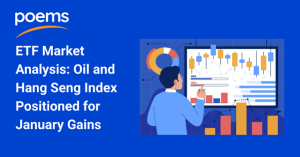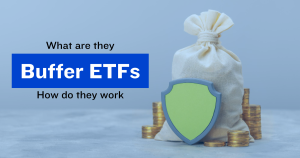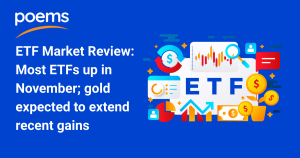Everything You Need to Know About Gold Investing July 1, 2024

Did you know that Gold and the S&P500 dropped by approximately ~8.25% and ~33.81% respectively during the Covid Crash in March 2020?
Gold has been a symbol of wealth and a medium of exchange for centuries. Its unique properties, such as resistance to corrosion and tarnish, make it a valuable asset.
Today, gold continues to be a popular investment, especially during times of economic uncertainty.
Why the Gold Sector?
The gold sector is attractive due to its historical role as a hedge against inflation and as a safe-haven asset during market volatility. Gold’s intrinsic value and limited supply make it a reliable store of value.
Key Economic Data: What Moves Gold
Gold’s price is influenced by a complex web of factors:
- Inflation: Gold often thrives during inflationary periods, as its value tends to rise with the cost of living.
- Interest Rates: Generally, lower interest rates make gold more attractive, as it doesn’t offer a yield like bonds.
- Fear of Recession: Even with high rates, if investors fear a looming recession, they might shift towards gold as a defensive asset.
- Geopolitical Events: Global crises and uncertainty tend to boost gold demand.
- Dollar Strength: Gold is priced in dollars, so a weaker dollar often translates to higher gold prices.
- Central Bank Activity: Central banks buying or selling gold can impact the market.
In Q1 2024, central banks globally purchased a record 290 tonnes of gold, the strongest start to any year on record. This robust demand helped drive gold prices to new all-time highs above $2,450 per ounce in May 2024.
The top central bank buyers in Q1 2024 were:
- China: 60 tonnes
- Turkey: 38 tonnes
- India: 37 tonnes
- Kazakhstan: 16 tonnes
- Poland: 15 tonnes
As of the end of 2023, global central bank gold reserves totaled 36,699 tonnes, accounting for around 17% of all the gold ever mined.
The top five countries with the largest central bank gold holdings are:
- United States: 8,133 tonnes
- Germany: 3,353 tonnes
- Italy: 2,452 tonnes
- France: 2,436 tonnes
- Russia: 2,301 tonnes
Impact on Gold Prices
- Central bank gold buying has been cited as a key driver behind gold’s rally to record highs in 2024, along with geopolitical tensions and safe-haven demand.
- China’s pause in gold purchases in May 2024, after an 18-month buying spree, contributed to a 1.5% drop in gold prices on June 7th.
- Analysts suggest that any potential shift in central bank demand, especially from major buyers like China, could significantly impact gold prices given the scale of their purchases in recent years.
Investment Merits
- Inflation Hedge: Gold often retains its value better than fiat currencies during inflationary periods.
- Portfolio Diversification: Adding gold to a portfolio can reduce overall risk due to its low correlation with other asset classes.
- Safe-Haven Asset: During economic downturns, investors flock to gold, driving up its price.
Investment Risks
- Price Volatility: Gold prices can be highly volatile, influenced by market sentiment and macroeconomic factors.
- No Yield: Unlike stocks or bonds, gold does not generate income through dividends or interest.
- Storage and Insurance Costs: Physical gold requires secure storage and insurance, adding to the investment cost.
Different Ways to Invest into Gold
- Physical Gold: Invest in gold bars and coins, which can be stored at home or in a safe deposit box. This method provides direct ownership but requires secure storage and insurance.
- Gold ETFs: Exchange-Traded Funds (ETFs) that invest in physical gold. This option offers convenience, liquidity, and lower costs compared to buying physical gold.
- Gold Mining Stocks: Purchase shares of companies involved in gold mining. This approach allows investors to potentially benefit from the company’s growth and dividends but carries higher risk due to the operational challenges of mining companies.
Here’s an overview:
| Investment Method | Pros | Cons |
| Physical Gold |
|
|
| Gold ETFs |
|
|
| Gold Mining Stocks |
|
|
Why ETFs?
ETFs provide several benefits:
- Diversification: They offer exposure to a broad range of assets within the same asset class, reducing the risk associated individual investments unlike gold mining stocks which can be highly volatile and subject to operational risks.
- Low Cost: ETFs typically have lower expense ratios compared to mutual funds and are generally more cost-effective than the storage and insurance costs associated with physical gold.
- Liquidity: ETFs can be traded like stocks, providing flexibility and ease of access, unlike physical gold which may have a wide bid-ask spread and requires secure storage.
What Are the Key Indices?
- MSCI ACWI Select Gold Miners IMI Index: Tracks the performance of global companies primarily involved in gold mining.
- Philadelphia Gold and Silver Index (XAU): Measures the performance of a basket of gold and silver mining companies.
- NYSE Arca Gold Miners Index (GDM): Reflects the performance of large-capitalisation companies involved in the gold mining industry.
- LBMA Gold Price PM USD: The global benchmark price for gold is set daily in London through an auction process conducted by the London Bullion Market Association (LBMA).
Types of Gold ETFs
- Physical Gold ETFs: These ETFs hold physical gold bullion.
- Gold Mining ETFs: These ETFs invest in gold mining companies.
- Gold Derivatives ETFs: These ETFs use leverage to amplify returns.
- Active Trading: Involves frequent buying and selling to capitalisze on market movements. For this, you may trade any of the ETFs depending on your tolerance to volatility.
- Physical gold ETFs being the least volatile.
- Gold mining ETFs have moderate volatility.
- Gold miner inversed leveraged ETF being the most volatile.
- Passive DCA: Involves regularly investing a fixed amount in gold ETFs, regardless of price.
- DCA on Gold Miners ETF: since gold is a non-cash generating asset, consider gold miners ETF to participate in gold performance with a cash generating asset.
- DCA on Physical Gold ETF: if you have $1000/month to build your diversified portfolio, you may consider investing 10% ($100) on GLDM (which is eligible for fractional shares as well).
- Not sure whether to start with Active Trading or Passive DCA? Join the P3 ETF Community and discuss with your fellow traders.
- https://www.gold.org/goldhub/gold-focus/2024/06/central-bank-gold-buying-picks-april
- https://www.gold.org/goldhub/research/gold-demand-trends/gold-demand-trends-q1-2024/central-banks
- https://www.businesstimes.com.sg/international/global/gold-slumps-chinas-central-bank-halts-18-month-buying-spree
- https://www.statista.com/statistics/1465127/gold-demand-central-banks-by-country/
- https://www.nasdaq.com/articles/top-10-central-bank-gold-reserves-updated-2024
- https://www.reuters.com/markets/commodities/gold-extends-record-rally-amid-speculative-buying-geopolitical-tensions-2024-04-08/
- https://www.gold.org/goldhub/data/gold-demand-by-country
| ETF Ticker | Name | Type | AUM (US$) | Expense Ratio | Inception Date | Index | Dividend Yield (TTM) | Exchanges |
| GLD | SPDR Gold Shares | Gold ETF | 62.8B | 0.40% | Nov 2004 | LBMA Gold Price PM USD | 0.00% | NYSE / AMEX / SGX / HKEX / TSE |
| GLDM | SPDR Gold MiniShares Trust | Gold ETF | 7.39B | 0.10% | June 2018 | LBMA Gold Price PM USD | 0.00% | NYSE / AMEX |
| SGOL | Aberdeen Standard Physical Gold Shares ETF | Gold ETF | 3.16B | 0.17% | Aug 2009 | LBMA Gold Price PM USD | 0.00% | NYSE / AMEX |
| GDX | VanEck Gold Miners ETF | Gold Miner ETF | 13.2B | 0.51% | May 2006 | NYSE Arca Gold Miners TR USD | 1.14% | NYSE / AMEX |
| GDXJ | VanEck Junior Gold Miners ETF | Gold Miner ETF | 5.07B | 0.53% | Nov 2009 | MVIS Global Junior Gold Miners NR USD | 1.23% | NYSE / AMEX |
| RING | iShares MSCI Global Gold Miners ETF | Gold Miner ETF | 485M | 0.39% | Jan 2012 | MSCI ACWI Select Gold Miners IMI NR USD | 1.53% | NASDAQ |
| SGDM | Sprott Gold Miners ETF | Gold Miner ETF | 248M | 0.50% | July 2014 | Solactive Gold Miners Cus Fact TR USD | 1.34% | NYSE / AMEX |
| SGDJ | Sprott Junior Gold Miners ETF | Gold Miner ETF | 120M | 0.50% | Mar 2015 | Solactive Jr Gold Miners Cus Fact TR USD | 1.41% | NYSE / AMEX |
| NUGT | Direxion Daily Gold Miners Index Bull 2X Shares | Gold Leveraged & Inversed ETF | 655M | 1.08% | Nov 2010 | NYSE Arca Gold Miners TR USD | 0.00% | NYSE / AMEX |
| DUST | Direxion Daily Gold Miners Index Bear 2X Shares | Gold Leveraged & Inversed ETF | 176M | 1.11% | Nov 2010 | NYSE Arca Gold Miners TR USD | 0.00% | NYSE / AMEX |
For other Gold related ETFs, head over to POEMS ETF Screener and search “Gold”.
Who Is Gold For?
Gold is suitable for investors looking to diversify their portfolios, hedge against inflation, and seek a safe-haven asset during economic downturns.
Who Is Gold Not For?
Gold may not be ideal for investors seeking regular income, those with a low-risk tolerance for price volatility, or those unwilling to incur storage and insurance costs for physical gold.
How to Start: Active Trading vs. Passive Dollar-Cost Averaging (DCA)
Sources
Disclaimer
These commentaries are intended for general circulation. It does not have regard to the specific investment objectives, financial situation and particular needs of any person who may receive this document. Accordingly, no warranty whatsoever is given and no liability whatsoever is accepted for any loss arising whether directly or indirectly as a result of any person acting based on this information. Opinions expressed in these commentaries are subject to change without notice. Investments are subject to investment risks including the possible loss of the principal amount invested. The value of the units and the income from them may fall as well as rise. Past performance figures as well as any projection or forecast used in these commentaries are not necessarily indicative of future or likely performance. Phillip Securities Pte Ltd (PSPL), its directors, connected persons or employees may from time to time have an interest in the financial instruments mentioned in these commentaries. Investors may wish to seek advice from a financial adviser before investing. In the event that investors choose not to seek advice from a financial adviser, they should consider whether the investment is suitable for them.
The information contained in these commentaries has been obtained from public sources which PSPL has no reason to believe are unreliable and any analysis, forecasts, projections, expectations and opinions (collectively the “Research”) contained in these commentaries are based on such information and are expressions of belief only. PSPL has not verified this information and no representation or warranty, express or implied, is made that such information or Research is accurate, complete or verified or should be relied upon as such. Any such information or Research contained in these commentaries are subject to change, and PSPL shall not have any responsibility to maintain the information or Research made available or to supply any corrections, updates or releases in connection therewith. In no event will PSPL be liable for any special, indirect, incidental or consequential damages which may be incurred from the use of the information or Research made available, even if it has been advised of the possibility of such damages. The companies and their employees mentioned in these commentaries cannot be held liable for any errors, inaccuracies and/or omissions howsoever caused. Any opinion or advice herein is made on a general basis and is subject to change without notice. The information provided in these commentaries may contain optimistic statements regarding future events or future financial performance of countries, markets or companies. You must make your own financial assessment of the relevance, accuracy and adequacy of the information provided in these commentaries.
Views and any strategies described in these commentaries may not be suitable for all investors. Opinions expressed herein may differ from the opinions expressed by other units of PSPL or its connected persons and associates. Any reference to or discussion of investment products or commodities in these commentaries is purely for illustrative purposes only and must not be construed as a recommendation, an offer or solicitation for the subscription, purchase or sale of the investment products or commodities mentioned.
About the author
MuMing Yong
ETF Specialist
Mu Ming traded and invested for more than 8 years in various instruments including ETFs, Equities, Unit Trusts, Options, DLC, CFD, and ILP from the US, SG and HK market. He's a believer of personal finance, macroeconomics, and, technical analysis - so much so that he found himself analysing his social media engagement using trend lines and patterns.

 ETF Market Analysis: Oil & Hang Seng Set for January Gains
ETF Market Analysis: Oil & Hang Seng Set for January Gains  Buffer ETFs — What Are They and How Do They Work?
Buffer ETFs — What Are They and How Do They Work?  ETF Market Review: Most ETFs up in November; gold expected to extend recent gains
ETF Market Review: Most ETFs up in November; gold expected to extend recent gains  Should You Invest Your Supplementary Retirement Scheme (SRS) Savings?
Should You Invest Your Supplementary Retirement Scheme (SRS) Savings? 




